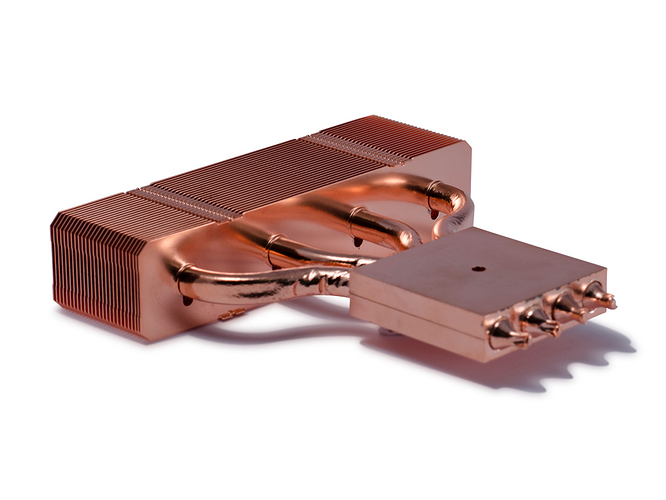Still loving your avatar Ross!
I work with liquid cooled stators and hydrogen cooled rotors in large generators.
Most large motors are limited by the ability to cool the stator not the rotor. On an outrunner the can (rotor) has a large surface area and is directly able to conduct heat away. The stator is where most of the heat appears and it enclosed so it is much more likely to get hot.
Has anyone here taken good measurements of the rotor temperature? If you do thermography keep in mind that they are steel and reflective so keep the emissivity in mind.
If you really want to cool an outrunner install a fan to draw air through the stator and get the heat outside. Keep in mind that adding a heatsink to the rotor adds signifigantly to the windage and that extra drag can overheat your stator.
What happens if I have sealed motors though? No fans for that
If you can actually seal it you can add ferrofluid to decrease the air gap and increase thermal transfer to the can
Run it within it’s design limits and it should not overheat.
Ideally it would have thermal compound connecting the stator to the end can which can conduct heat into the motor mount.
yoou mean like mineral oil? thermal fluid? ferro fluid is conductive lol
That would fine on a low RPM ebike hub motor but the drag on a small diameter high speed motor would probably make things worse.
hu too cool. weird branding though
cause theres this
Is 10k rpm low?
That’s gets me to like 40mph
Planning to get to 60-65mph
I think this is the way to go ultimately. and I think we wan machine a sink in case we have non thermal conductive mounts
If the carrier liquid is not conductive (a few are) then the ferrofluid is non-conductive as the particles are suspended independent of each other (no electrical path).
That is due to core losses at high erpm. Would even happen at no load and high ERPM. Cooling the rotor would have zero effect to prevent core heat buildup.
Alternative mount designs, specifically for enhanced stator cooling, would be interesting to see. Testing how much of an effect can they have.
Considering the tests on statorade were done at 200-300 rpm your results at 10k may vary.
What works on a 6 inch 10kv 800 watt motor may not directly work on a 2 inch 170 kv 3500 watt motor.
I’ve heard JayPooPoo is working on heat-pipes and heat sink hangers… he should have it all worked out in a couple of generations…
That’s interesting. Looking into it more, it seems drilling tiny holes in the more turbulent fins model improves transfer even more as it makes even more turbulent flow and surface area.
I still think it would be more effective to cool the motor mounts as they’re in more direct contact with the stator.
what worries me here is modularity. YOud have to design a mount for every hanger/motor and then gears vs belts yada yada.
thats why a thin pad between motor and mount, to move the heat to a sink, seems like the best method to me. something like this
as thin as possible to accomodate pipes, and then you can heatsink anything you want. has to be thin interface so you dont lose a bunch of shaft length…
I feel from my aero background laminar flow would be better than turbulated flow…
turbulated flow creates a static boundary pocket where laminar flow would be constantly refreshed with good clean cool air
Keep in mind that heatpipes and heatsinks need a certain temperature differential to effectively move heat energy.
If the mounting plate of the motor is not getting more than a few degrees above ambient then there just wont be much heat transfer no matter how big of a heatsink you install.
